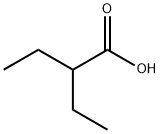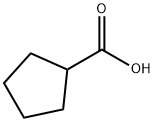1,1'-FERROCENEDICARBOXYLIC ACID
Synonym(s):1,1′-Biscarboxylferrocene;1,1′-Dicarboxyferrocene
- CAS NO.:1293-87-4
- Empirical Formula: C12H10FeO410*
- Molecular Weight: 274.05
- MDL number: MFCD00001423
- EINECS: 215-068-9
- SAFETY DATA SHEET (SDS)
- Update Date: 2025-07-04 15:34:21

What is 1,1'-FERROCENEDICARBOXYLIC ACID?
Chemical properties
dark brown powder
The Uses of 1,1'-FERROCENEDICARBOXYLIC ACID
Reactant for preparation of:
- Planar chiral ferrocene-based amido-phosphine ligands as catalysts for asymmetric allylic alkylation reactions
- Potential antitumor agents
- Isostructural ferrocenyl coordination polymer hollow microspheres with H2 storage properties
- Prganometallic aromatic polyesters
- Manganese-lanthanide-ferrocene clusters
What are the applications of Application
1,1′-Ferrocenedicarboxylic acid is Reactant for preparation of planar chiral ferrocene-based amido-phosphine ligands
Purification Methods
It crystallises in orange-yellow crystals from AcOH and sublimes above 230o. The monomethyl ester has m 147-149o [Nesmeyanov & Reutov Dokl Acad Nauk USSS 115 518 1957]. The dimethyl ester has m 114-115o [Woodward et al. J Am Chem Soc 74, 3458 1953]. The diacid chloride has m 92-93o when recrystallised from pet ether. [Nesmeyanov & Reutov Dokl Acad Nauk SSSR 120 1267 1958, Kazitsyna et al. Dokl Acad Nauk SSSR 127 333 1959, Beilstein 16 IV 1811.]
Properties of 1,1'-FERROCENEDICARBOXYLIC ACID
| Melting point: | ≥300 °C(lit.) |
| storage temp. | Inert atmosphere,Room Temperature |
| solubility | DMSO, Ethyl Acetate (Very Slightly, Heated, Sonicated) |
| form | crystal |
| color | orange |
| Water Solubility | Insoluble |
| Exposure limits | ACGIH: TWA 1 mg/m3 NIOSH: TWA 1 mg/m3 |
| Stability: | Stable. Incompatible with strong oxidizing agents. |
| CAS DataBase Reference | 1293-87-4 |
| NIST Chemistry Reference | 1,1'-Ferrocenedicarboxylic acid(1293-87-4) |
Safety information for 1,1'-FERROCENEDICARBOXYLIC ACID
| Signal word | Warning |
| Pictogram(s) |
 Exclamation Mark Irritant GHS07 |
| GHS Hazard Statements |
H315:Skin corrosion/irritation H319:Serious eye damage/eye irritation H335:Specific target organ toxicity, single exposure;Respiratory tract irritation |
| Precautionary Statement Codes |
P261:Avoid breathing dust/fume/gas/mist/vapours/spray. P305+P351+P338:IF IN EYES: Rinse cautiously with water for several minutes. Remove contact lenses, if present and easy to do. Continuerinsing. |
Computed Descriptors for 1,1'-FERROCENEDICARBOXYLIC ACID
New Products
Indole Methyl Resin tert-butyl 9-methoxy-3-azaspiro[5.5]undecane-3-carboxylate Boc-His(Boc)-OH 2-CTC Resin 4-Chloro-7-tosy1-7Hpyrrolo[2,3-d]pyrimidine 5,7-Dibromo-1H-indole 2,5-dichloro-N-hydroxy-4,6-dimethylpyridine-3-carboximidamide 2,2-Dimethoxy-7-azaspiro[3.5]nonane hydrochloride 4-chloromethyl-5-methyl-1,3-dioxol-2-one (DMDO-Cl) R-2-BENZYLOXY PROPIONIC ACID 1,1’-CARBONYLDIIMIDAZOLE 1,1’-CARBONYLDI (1,2-4 TRIAZOLE) N-METHYL INDAZOLE-3-CARBOXYLIC ACID 4-((2-hydroxyethyl)thio)benzoic acid 1-(TERT-BUTOXYCARBONYL)-2-PYRROLIDINONE Methyl 6-methylnicotinate 3-Pyridineacrylic acid tert-Butyl carbazate TETRAHYDRO-2H-PYRAN-3-OL 2-((4-morpholinophenylamino) (methylthio) methylene) malononitrile 3-(4-morpholinophenylamino)-5-amino-1H-pyrazole-4-carbonitrile 2,4-dihydroxybenzaldehyde 1,3-Diethyl-1,3-Diphenylurea Methyl 2-methylquinoline-6-carboxylateRelated products of tetrahydrofuran




![1,1''-([4,4'-BIPIPERIDINE]-1,1'-DIYLDICARBONYL)BIS[1'-(METHOXYCARBONYL) FERROCENE]](https://img.chemicalbook.in/CAS/GIF/130882-76-7.gif)



You may like
-
 Pyridine 99.5% HPLC /UV SpectroscopyView Details
Pyridine 99.5% HPLC /UV SpectroscopyView Details
110-86-1 -
 Guanine , 99%View Details
Guanine , 99%View Details
73-40-5 -
 Piperazine Spot supply, best priceView Details
Piperazine Spot supply, best priceView Details
110-85-0 -
 Potassium Hydroxide 90%View Details
Potassium Hydroxide 90%View Details
1310-58-3 -
 Dibutyl PhthalateView Details
Dibutyl PhthalateView Details
84-74-2 -
 Imidazole Spot supply, competitive priceView Details
Imidazole Spot supply, competitive priceView Details
288-32-4 -
 Octadecyl 3-(3,5-di-tert-butyl-4-hydroxyphenyl)propionate 98% (GC)View Details
Octadecyl 3-(3,5-di-tert-butyl-4-hydroxyphenyl)propionate 98% (GC)View Details
2082-79-3 -
 Thiourea 99% ARView Details
Thiourea 99% ARView Details
62-56-6
Statement: All products displayed on this website are only used for non medical purposes such as industrial applications or scientific research, and cannot be used for clinical diagnosis or treatment of humans or animals. They are not medicinal or edible.
